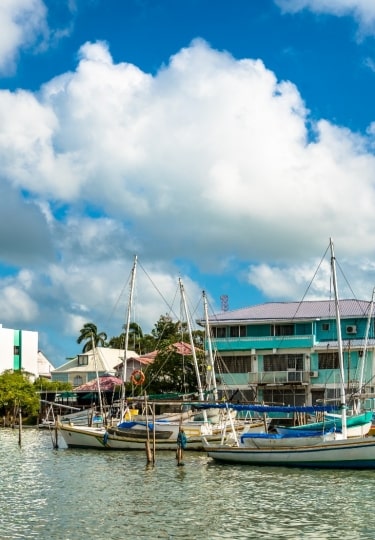Belize City is the main port and largest city of Belize. The country’s unique mix of people brings cultural diversity and a lively charm to the city’s streets.
While most visitors pass through on their way to explore Belize’s tropical wonders, the city has plenty of its own delights to take in.
Why Visit Belize City
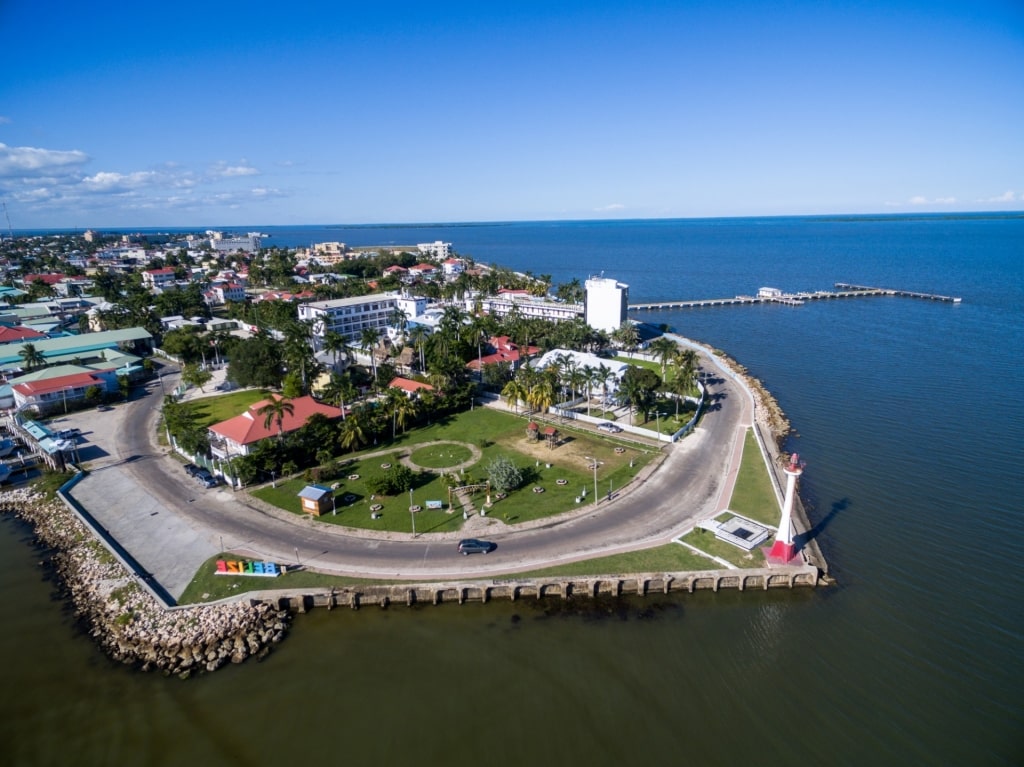
Belize City
Belize City is the major hub for those wishing to discover Belize’s natural and historical attractions. From the Belize Barrier Reef to ancient Maya ruins, there is plenty of adventure in this beautiful tropical country.
The city was badly hit by a hurricane in 1961 that resulted in the building of a new capital at Belmopan. Belize City, however, still has several notable buildings from the colonial era, including St. John’s Cathedral and the Baron Bliss Lighthouse.
That past is also reflected in the diversity of its cuisine, music, and art. You’ll find street food, lively festivals, and art galleries that show off a variety of influences.
History & Culture
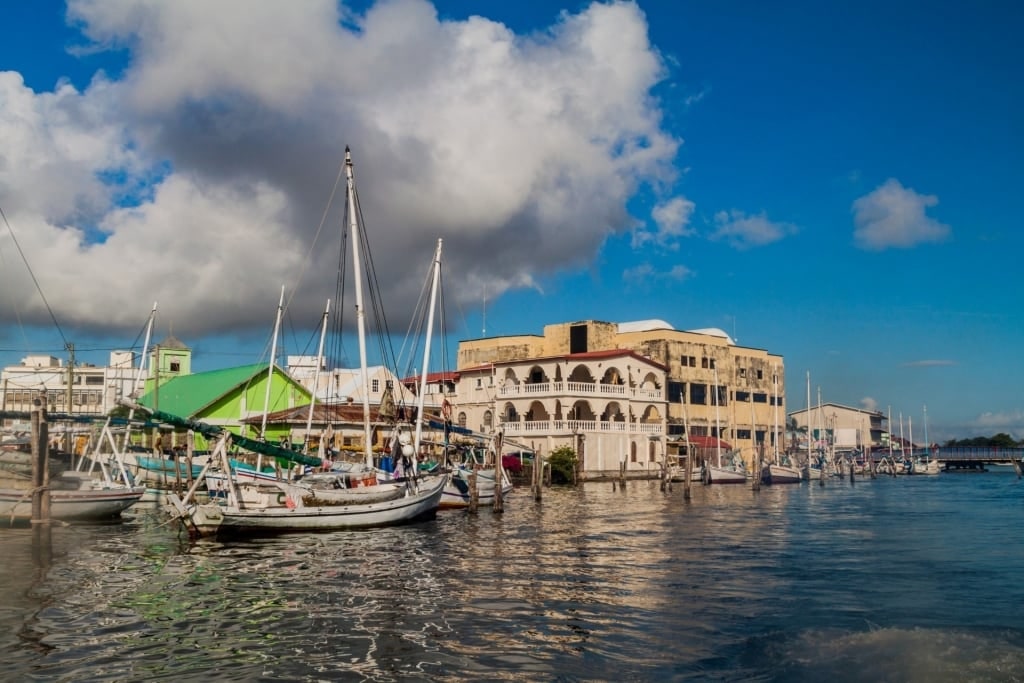
Belize City
For thousands of years, Belize was inhabited by the Maya. Their civilization left behind impressive archaeological sites, including advanced cities such as Xunantunich and Lamanai.
In the 17th century, British settlers established the territory later known as British Honduras. Logging for wood such as mahogany became a valuable export trade.
To work the timber plantations, the British imported enslaved Africans. Their language, music, and cuisine have had lasting effects on Belizean culture.
Belize gained independence from Britain in 1981 but English remains the official language. However, Belizeans also speak Spanish, Creole (Kriol), Garifuna, and Maya languages, among others, a daily reflection of the country’s wealth of cultures.
Wildlife & Nature
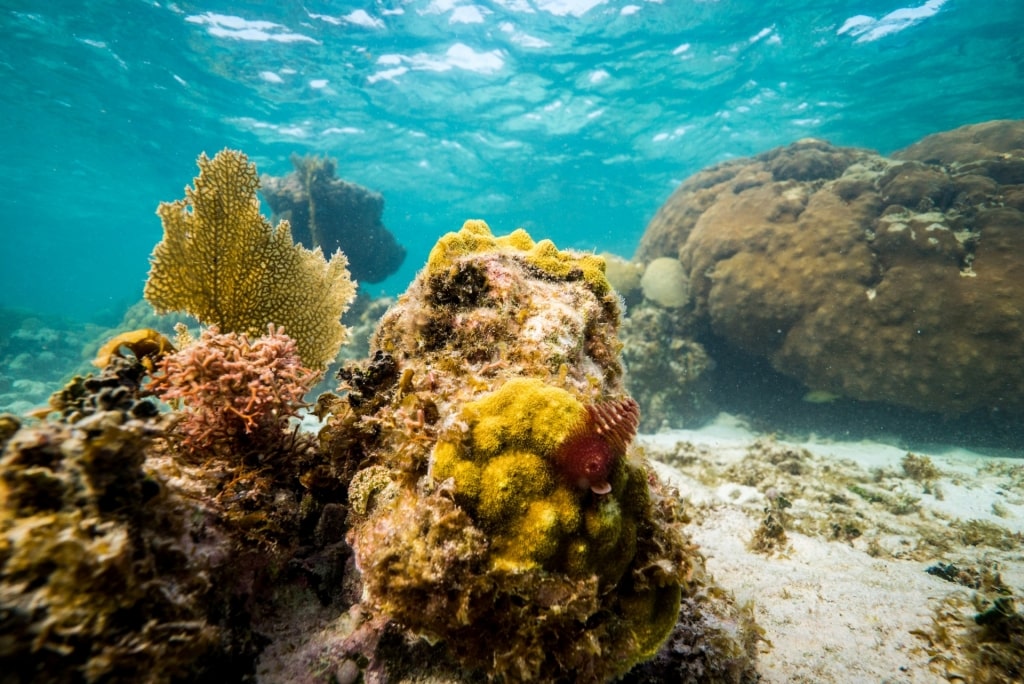
Belize Barrier Reef
The natural wonders of Belize are boundless. From the marine life along the Belize Barrier Reef to the reclusive jaguars of Cockscomb Basin, there is variety in abundance.
With more than 600 bird species recorded in the country, they are the most likely wildlife you’ll see in Belize City. The cry of the grackle, a blackbird familiar to North Americans, is a common sound on the streets.
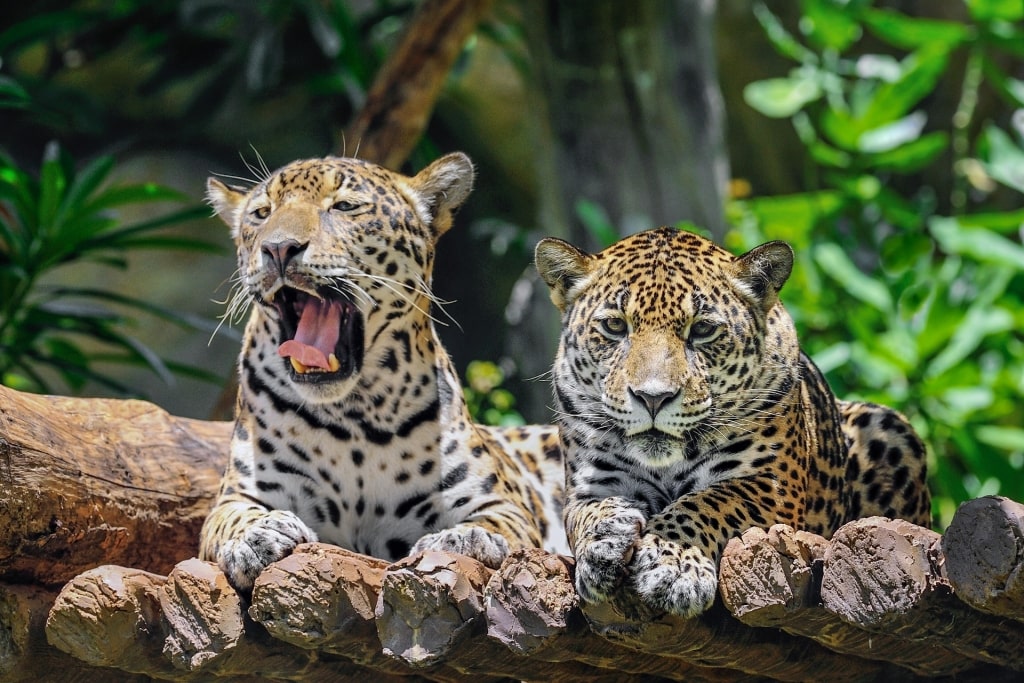
Belize Zoo
Belize Zoo, only 40 minutes from Belize City, is a pleasant surprise to many visitors. More animal sanctuary than zoo, it aims to care for mainly injured or orphaned Caribbean animals saved from the wild.
You’ll find more than 40 species (from a total of 160) of native wildlife in their natural habitat. These include puma, coatimundi, ocelot, and tapir.
Tips for Visiting Belize City
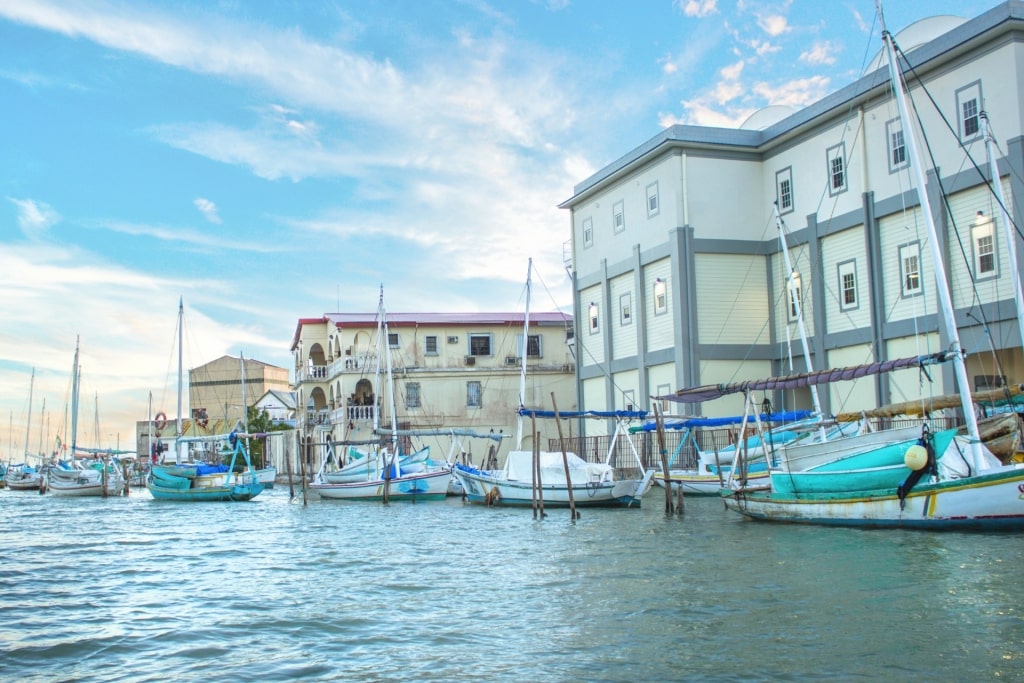
Tips
The official currency in Belize is the Belize Dollar (BZD), which is pegged at a rate of 2 BZD to 1 USD. US dollars are commonly used, with change often given in Belizean dollars.
Belize City sprawls over a large area that makes for hot work if exploring it on foot in the tropical heat. There are plenty of taxis and also water taxis to outlying islands such as Caye Caulker.
If you do walk around, it’s not wise to wear expensive jewelry or luxury watches.
Some of the best souvenirs of Belize City are hot sauces, chocolate, and rum. Another good choice is handicrafts, particularly carvings, and baskets with a Maya design.
Things to Do & Attractions
See Baron Bliss Lighthouse
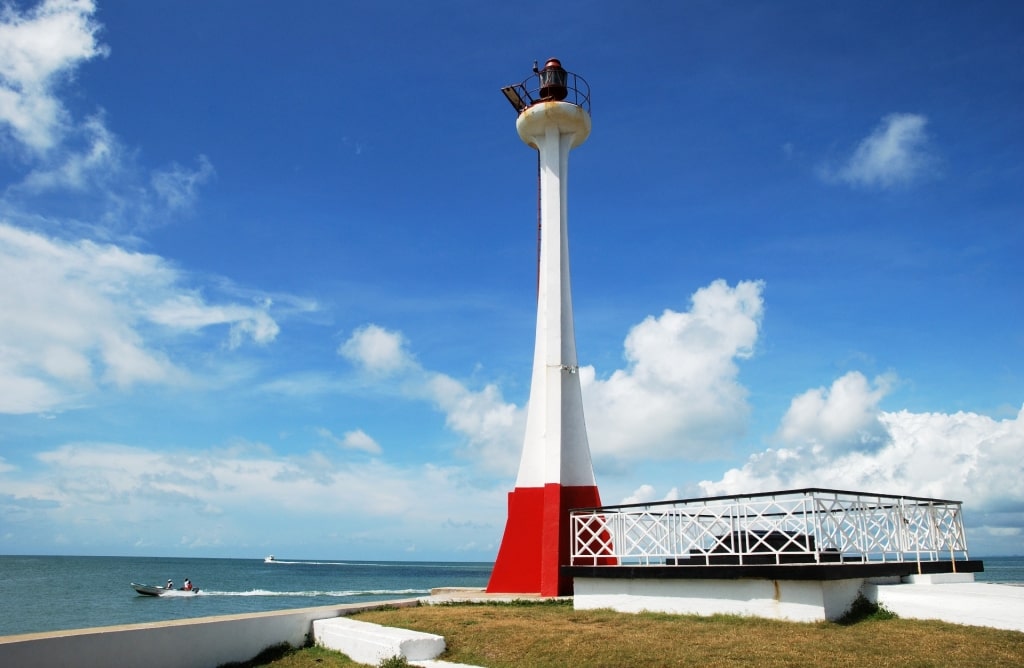
Baron Bliss Lighthouse
Built in 1924, Baron Bliss Lighthouse stands at the southern end of Marine Parade in Belize City. It’s named for a British aristocrat who left his fortune to Belize, having never set foot in the country.
White with a red base, the lighthouse is a favorite with photographers. It’s even more popular with sailors as it guides them into Belize City harbor through the reef.
Climb to the top for a bird’s eye view of the city. A memorial outside dedicated to Baron Bliss will tell you more about him.
Tourism Village
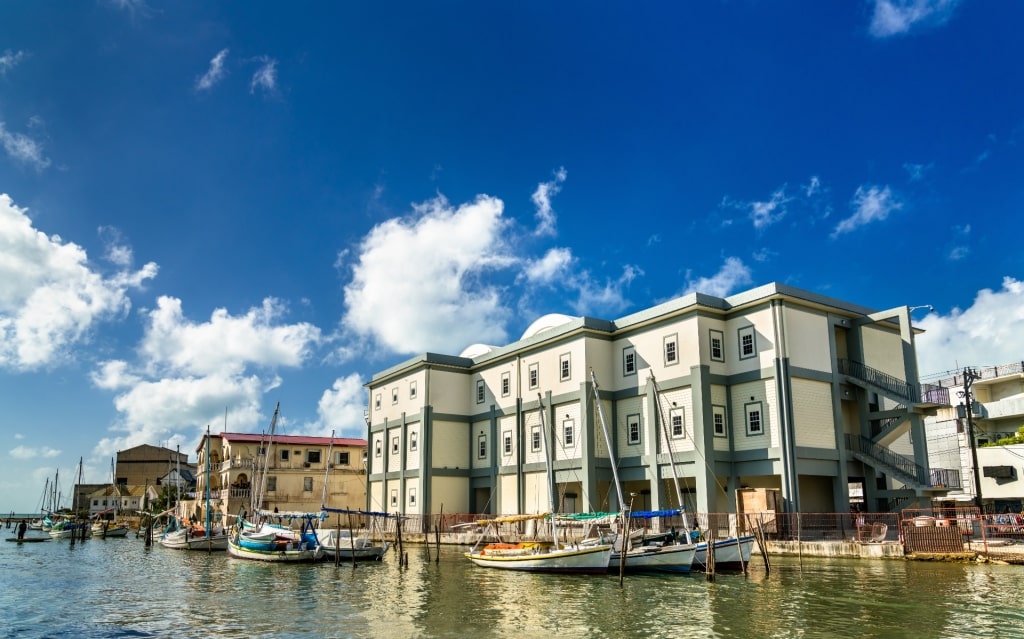
Tourism Village
The Belize City Tourism Village is a one-stop shop for visitors. This colorful cluster of shops, bars, and restaurants on the harborfront is where you will find anything you need to make the most of your stay.
The shops sell work by the best of the country’s craftspeople and artists. You’ll be hard-pressed to leave without buying some of their work – or at least, some locally made chocolate. The Tourism Village also hosts regular cultural events, such as music or dance.
St. John’s Cathedral
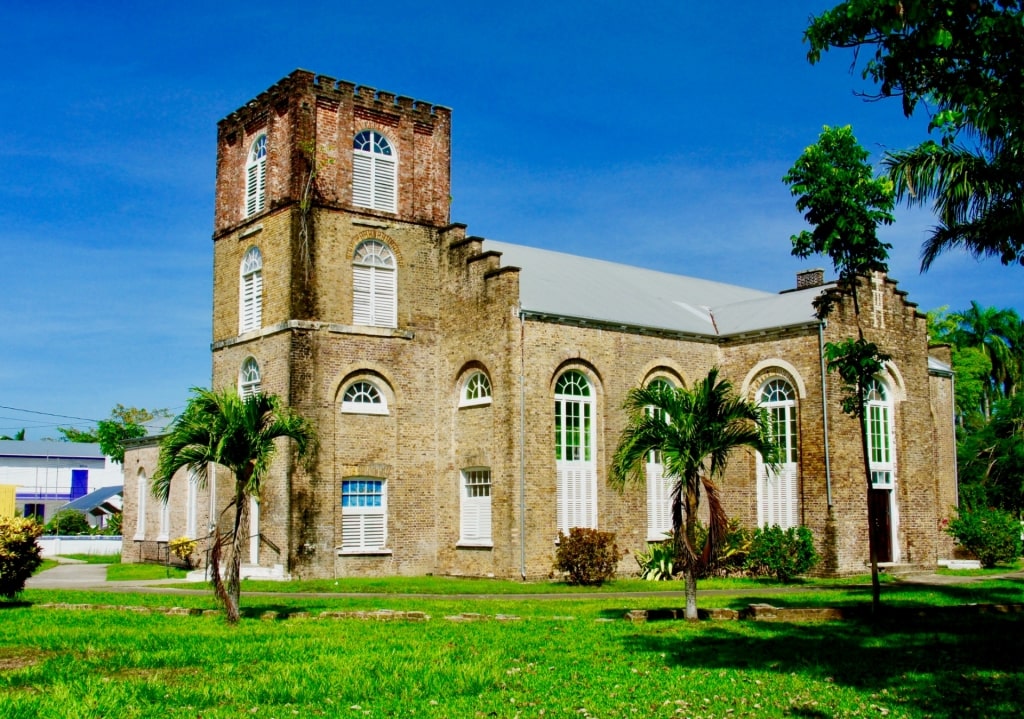
St. John’s Cathedral
One of the oldest Anglican cathedrals in Central America, St. John’s was built by enslaved Africans in 1812. It has been expanded since, but its red brick facade remains distinctive.
The architecture is a handsome mix of Gothic Revival and colonial styles. Inside, you will find notable stained glass work, beautiful wooden pews, and an interesting pipe organ.
Memorials on the walls commemorate figures from colonial history. Inscriptions such as “DIED AT THE AGE OF 28 OF THE COUNTRY FEVER” tell their own evocative tales.
Isaiah Morter Statue
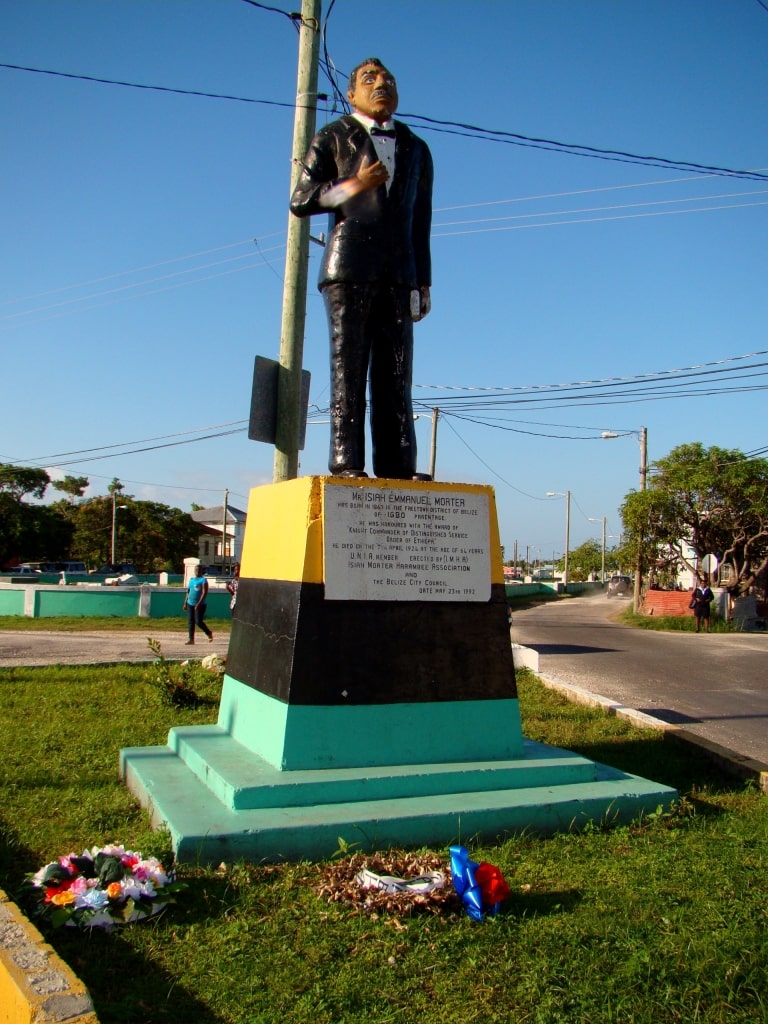
Isaiah Morter Statue Photo by Bjørn Christian Tørrissen on Wikimedia Commons, licensed under CC BY-SA 3.0
A reminder that the colonial history of Belize is only one part of its story is found in the statue of Isaiah Emmanuel Morter near the cathedral.
Born in 1860, of Igbo people enslaved from Africa, he ended his days as Belize’s first millionaire of color. The statue, in folk art style, is a notable work by local artist Vilma Romero (1938-2020).
Government House
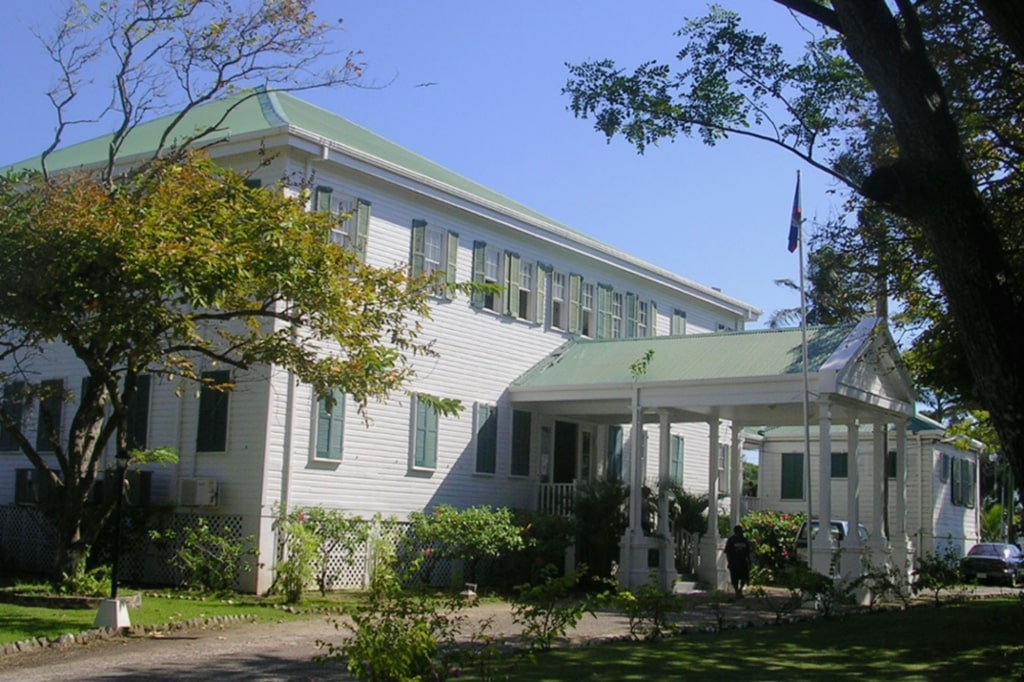
Government House Photo by Roger W on Flickr, licensed under CC BY-SA 2.0
Opposite St John’s Cathedral is Government House, also built in 1812. It was a residence for the governors of British Honduras.
The wooden verandas and decorative fretwork make the building a notable seafront landmark. Colonial history is also seen in nearby street names such as Albert and Queen Streets, named for Britain’s Queen Victoria and her consort.
Now known as the House of Culture, Government House hosts a museum and art gallery. The museum has interesting artifacts, photographs, and interactive displays from different eras.
Belize Sign Monument
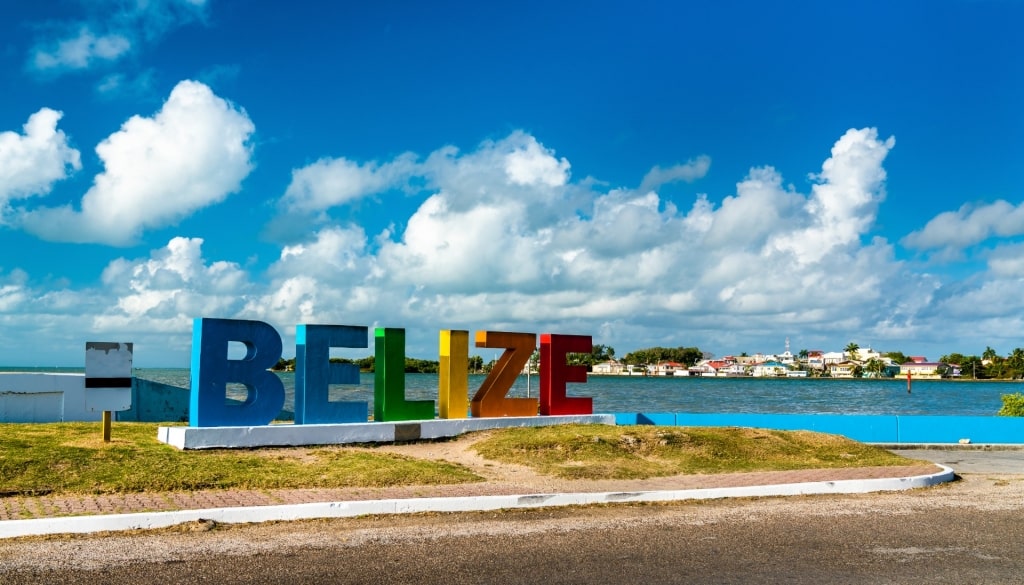
Belize Sign Monument
Few first-time visitors to Belize City can resist taking a photo at the “Welcome to Belize” sign. It’s on Seashore Drive, where the Caribbean makes a perfect backdrop.
BELIZE is spelled out in many colors, making for a great image against the blue sky and water. The L and the Z are particularly comfortable seats while you pose.
Museum of Belize
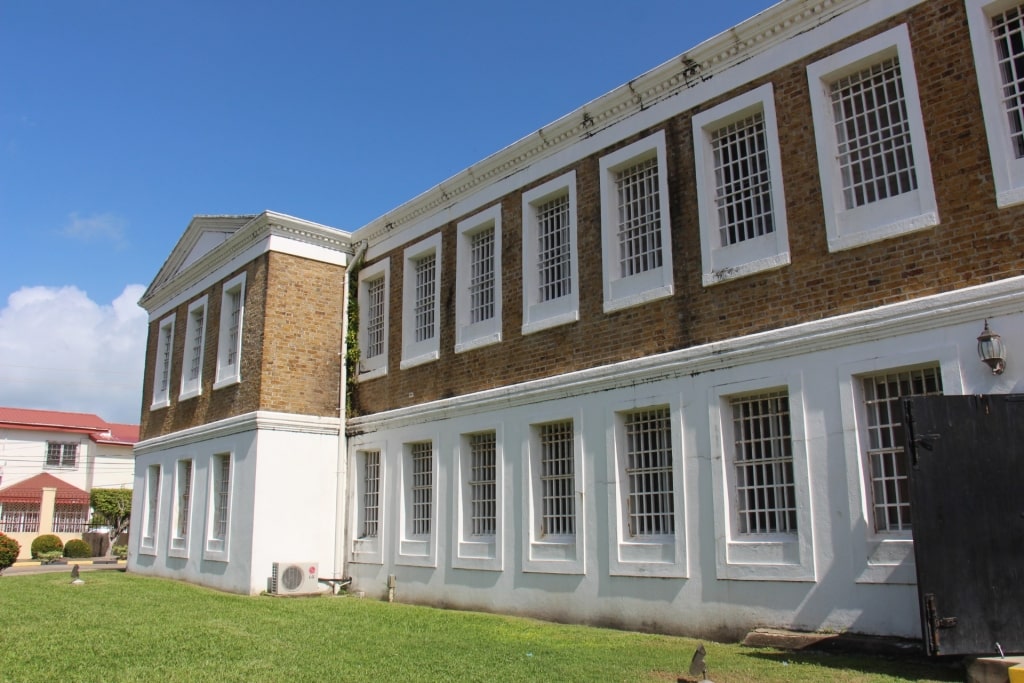
Museum of Belize Photo by ironypoisoning on Flickr, licensed under CC BY-SA 2.0
Not to be confused with the museum in the House of Culture, the Museum of Belize is in a former prison. It stands as a landmark at Queen Street and Eve Street.
The colonial-era prison was built in 1857 and shuttered as recently as 1992. You can still see inside one of the prison cells and appreciate why it closed.
The museum is a thorough guide to the ancient Maya, with archaeological artifacts including pottery and ceremonial objects. You’ll also find interactive exhibits on colonial history and independence alongside temporary exhibitions.
Crystal Cave
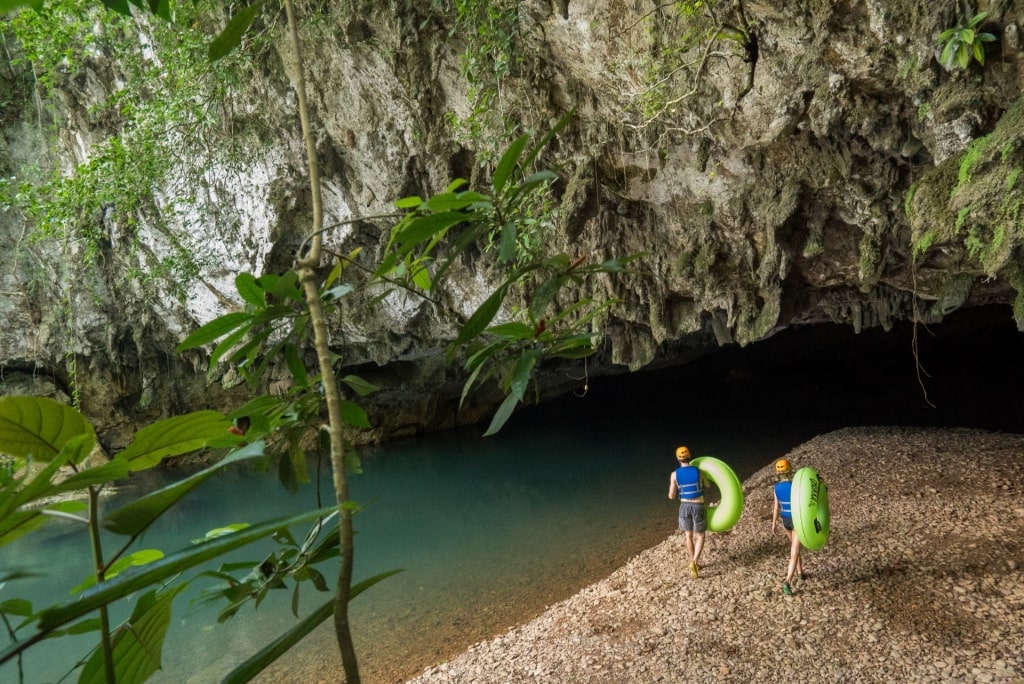
Crystal Cave
The well-preserved ceremonial artifacts found in Actun Tunichil Muknal (ATM) make the “Crystal Cave” an important historical record. The remains of a young woman, possibly a sacrificial victim, only add to its mystery.
One of the best caves in the world, it is a vast series of caverns and passages filled with incredible stalactite, stalagmite, and crystal formations. It was a ritual site for the ancient Maya for at least 600 years.
The cave can only be entered on a guided tour that involves wading through water. Bring a change of clothes (and socks) for this strenuous adventure that only enhances its appeal.
Goff’s Caye
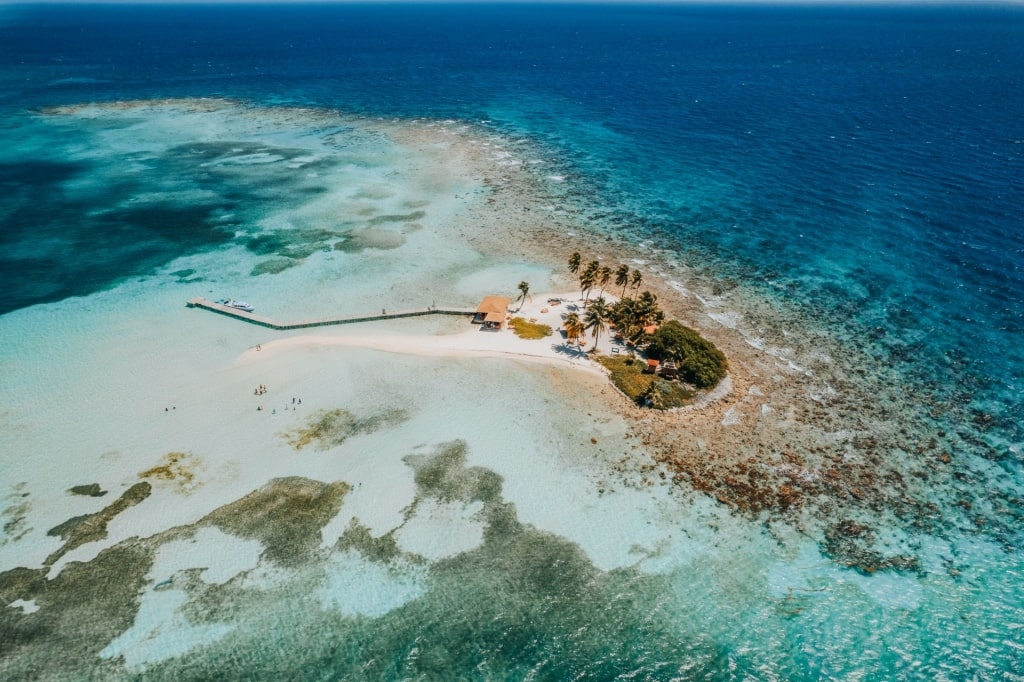
Goff’s Caye
When Belize City dwellers head for the beach, places such as Goff’s Caye are in their sights. This tiny, uninhabited island is one of the best places to snorkel in Belize and is only a short boat ride away.
Surrounded by a white, sandy beach, and clear, turquoise water, the island is a paradise for sunbathing or swimming. Snorkelers will love the rich marine life and varied coral reefs.
Boat operators offer everything from snorkeling gear to lunch. A picnic or barbecue on the beach makes for a great day out.
Caye Caulker
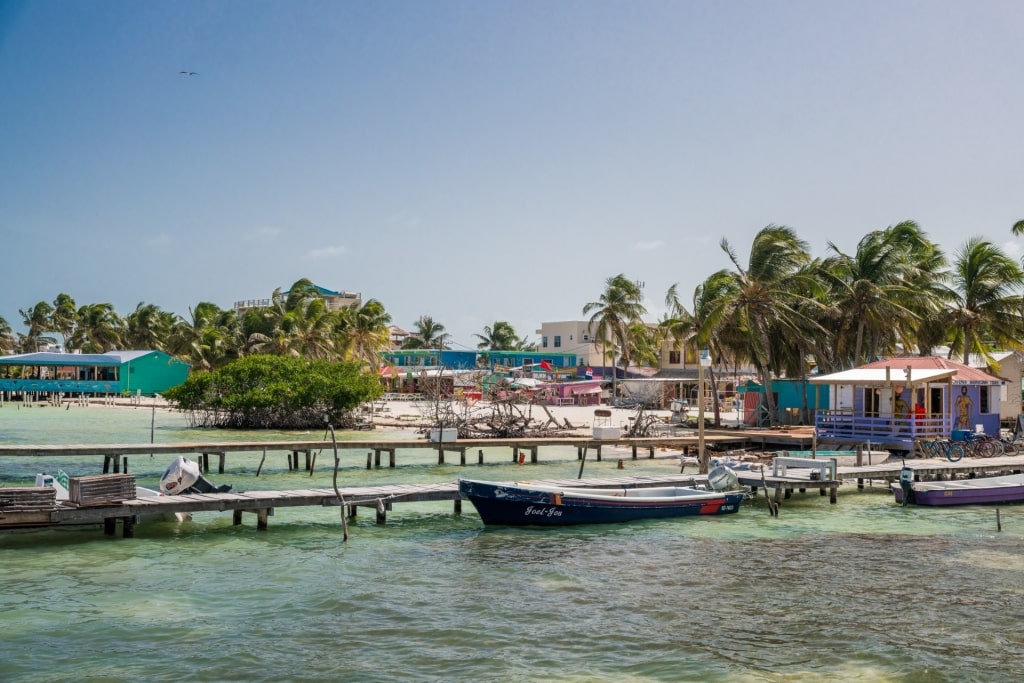
Caye Caulker
Caye Caulker is a much larger island than Goff’s Caye, so has more to offer for a day out. Five miles long and less than a mile wide, it is split into two by a narrow channel.
“The Split” is a sheltered beach in Belize and a popular spot to follow the island motto of “Go Slow”. With no cars, only golf carts or bicycles, time passes at a leisurely pace.
The island’s few sandy streets are dotted with colorful wooden buildings. You’ll find plenty of restaurants, beach bars, and cafés if you need a break from the beach.
Hol Chan Marine Reserve
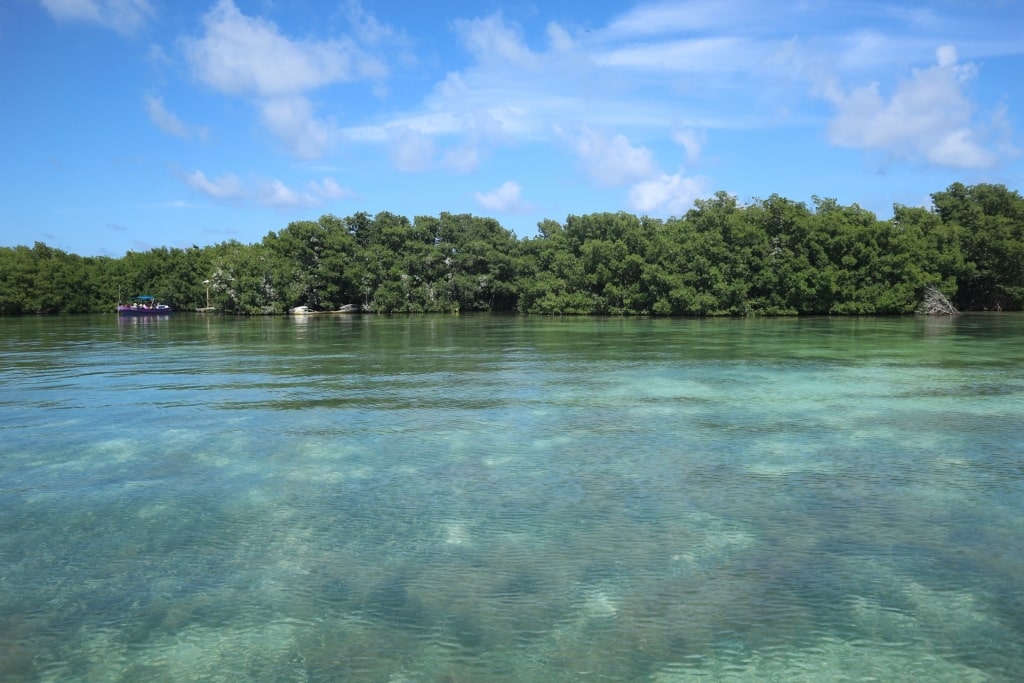
Hol Chan Marine Reserve
Hol Chan is part of the Belize Barrier Reef and protects a diverse range of marine life. Its habitats include mangrove forest, seagrass beds, and Caribbean coral reefs.
The best way to explore the reserve is by snorkeling or diving on a guided tour. One of the best diving spots in the world, you’ll see plenty of eels, sharks, rays, and sea turtles, among many other species here.
The water is shallow and well protected by Ambergris Caye, so it’s perfect for beginners. The guides here are passionate about conservation and you’ll leave inspired by their love for the natural world.
Lamanai Mayan Ruins
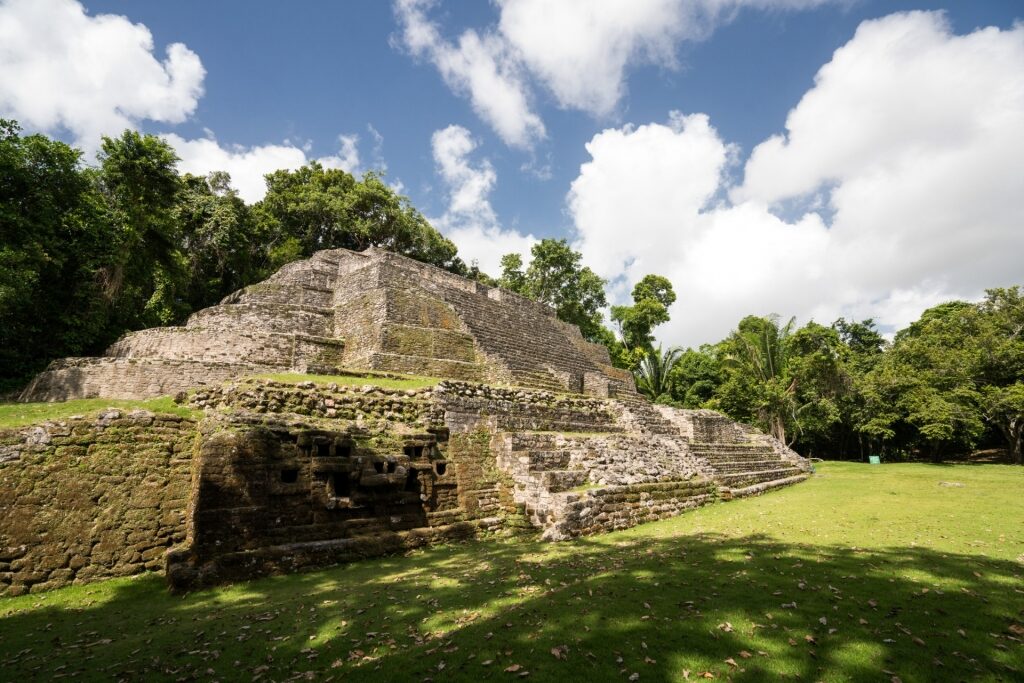
Lamanai Mayan Ruins
Two hours north of Belize City, Lamanai is a Maya site occupied as early as 1500 BC. It was settled until the late 1600s, an unusually long period.
The major structures, such as the 108-foot-tall High Temple, have been carefully restored. However, much is still covered in rainforest, filled with the cries of howler monkeys, toucans, and parrots.
Lamanai means “Submerged Crocodile” so numerous crocodile motifs have been found on the site. A visit involves an exciting boat ride on the New River where you might see the real thing.
Xunantunich Ruins
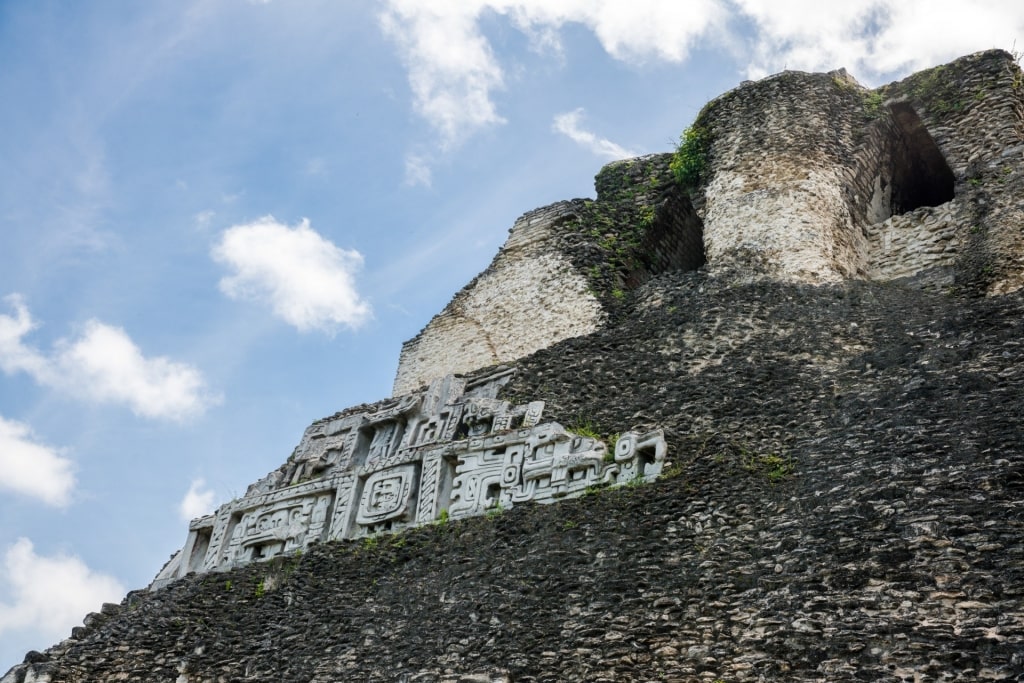
Xunantunich Ruins
A 130-foot-high pyramid, El Castillo (the Castle) is the literal highlight of Xunantunich, 70 miles west of Belize City. It’s only one of dozens of Maya temples, palaces, plazas, and a ball court and was lived in from 200 to 900 AD.
Reached by a hand-cranked ferry over the Mopan River, Xunantunich is still shrouded in forest and mystery. First explored by archaeologists in the early 1900s, many of its treasures have since been lost.
Xunantunich means “Stone Woman” in the Maya language and a goddess statue stands at the base of El Castillo. Climb to the top for panoramic views over jungle landscapes to Guatemala.
Altun Ha
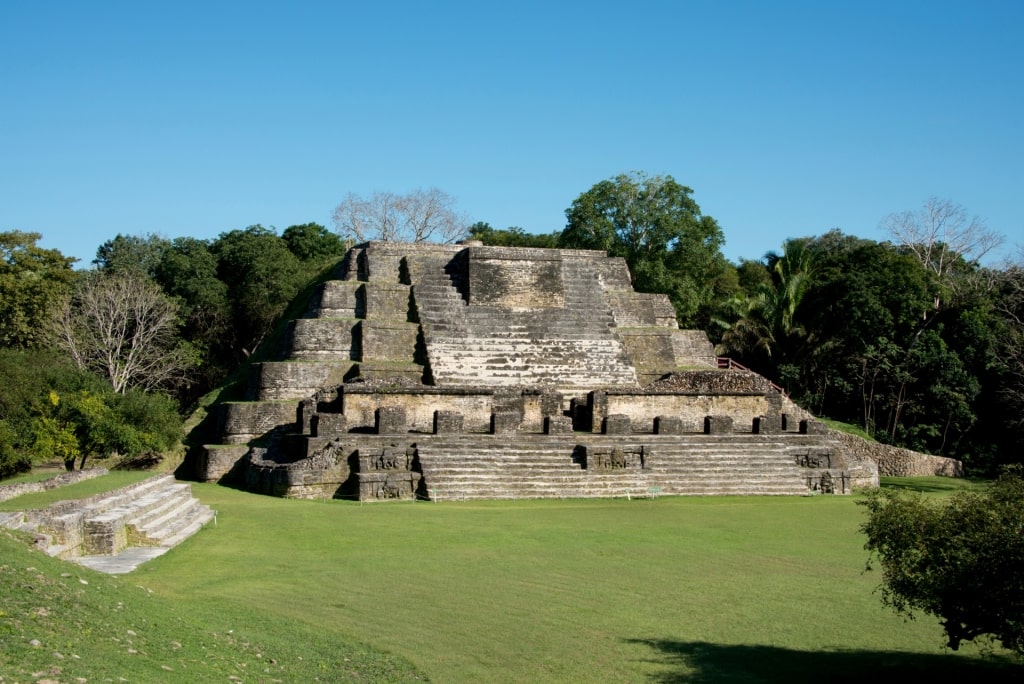
Altun Ha
This Mayan archaeological site is 30 miles north of Belize City. Covering around five square miles, it was a major ceremonial and trading center until abandoned in the tenth century.
Visiting here is one of the best things to do in Belize, where impressive pyramids, large plazas, and residential complexes can still be seen. The most impressive sight is the 54-foot-high Temple of the Masonry Altars, also called the Temple of the Sun God.
Since its discovery in the 1960s, Altun Ha has been only partially uncovered. However, jade jewelry discovered here, such as an awesome head of the Mayan sun god, gives a hint of its rich past.
Food & Drink
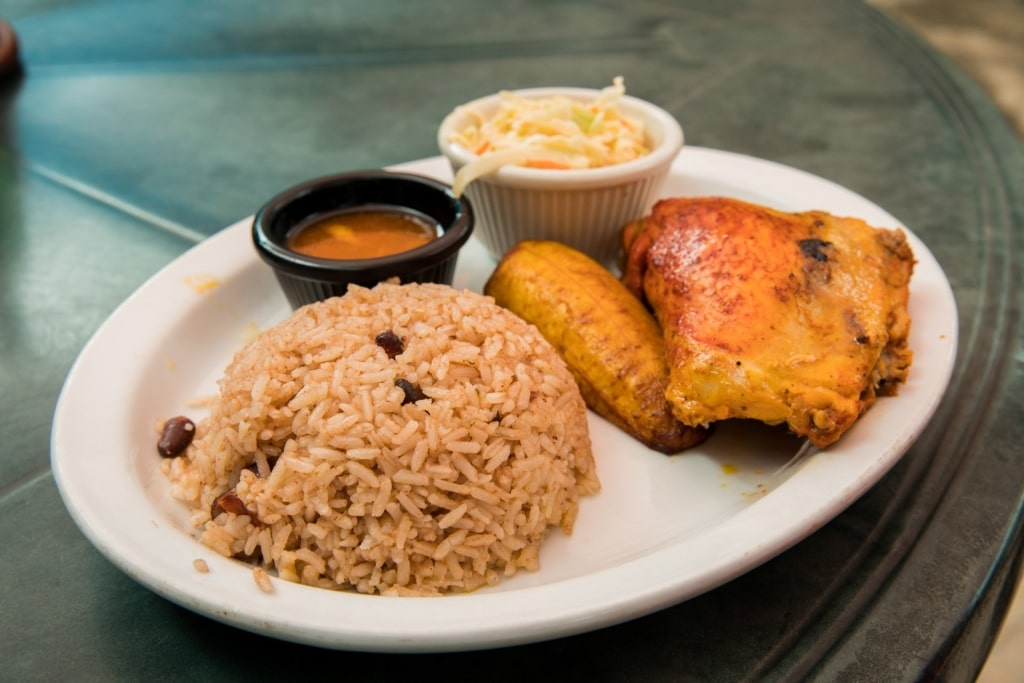
Food in Belize
You will find a full range of international food in Belize City, from pizza to sushi. However, it would be a shame not to try some local cuisine, which has Caribbean, Maya, African, and European influences.
Staple foods in Belize include rice and beans, often served with stewed chicken, fish, or pork. Fish stewed in coconut milk with boiled, mashed green plantains (fu-fu) makes a dish called hudut.
Fry jacks are fried dough pockets, eaten as a snack or at breakfast with beans, cheese, or meat. Conch ceviche, stewed chicken, fried plantain, and tamales are also common street foods.
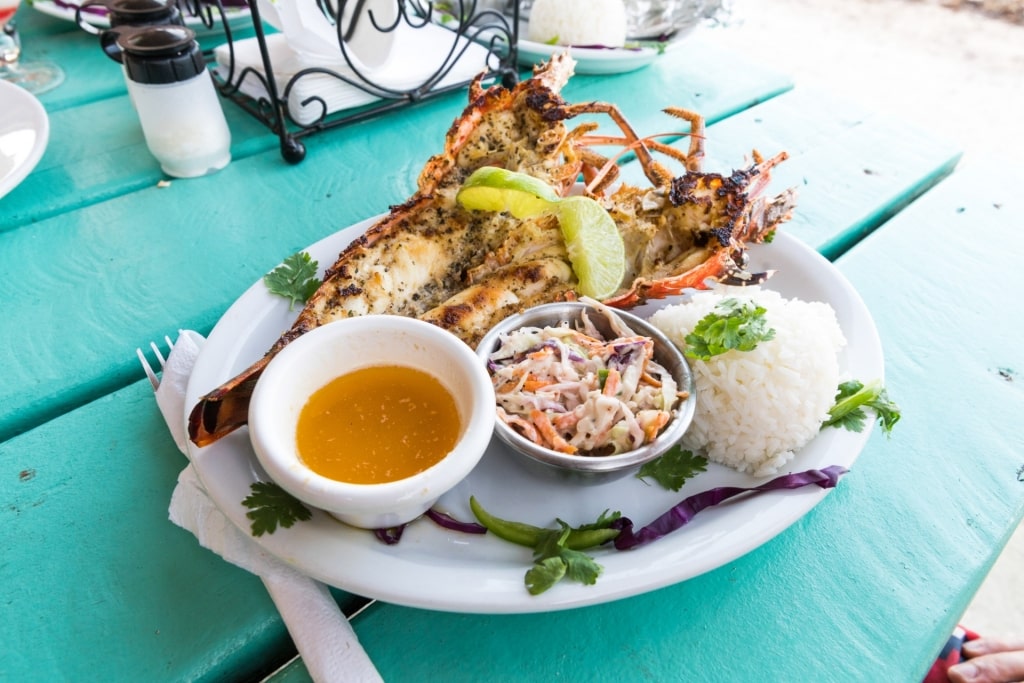
Seafood
Fresh Caribbean seafood is found in almost any restaurant. The most popular of these are Midtown (168 Newton Barrack), and Celebrity (Marine Parade Volta Building).
Nerrie’s, on Queen and Daly, is a great option for local food. Dishes such as conch soup, escabeche, or cow-foot soup are usually on the menu.
Hot sauce is an essential on any table. As well as the local Belikin beer and rum, fruit juices and coconut water are refreshing options.
Best Time to Visit
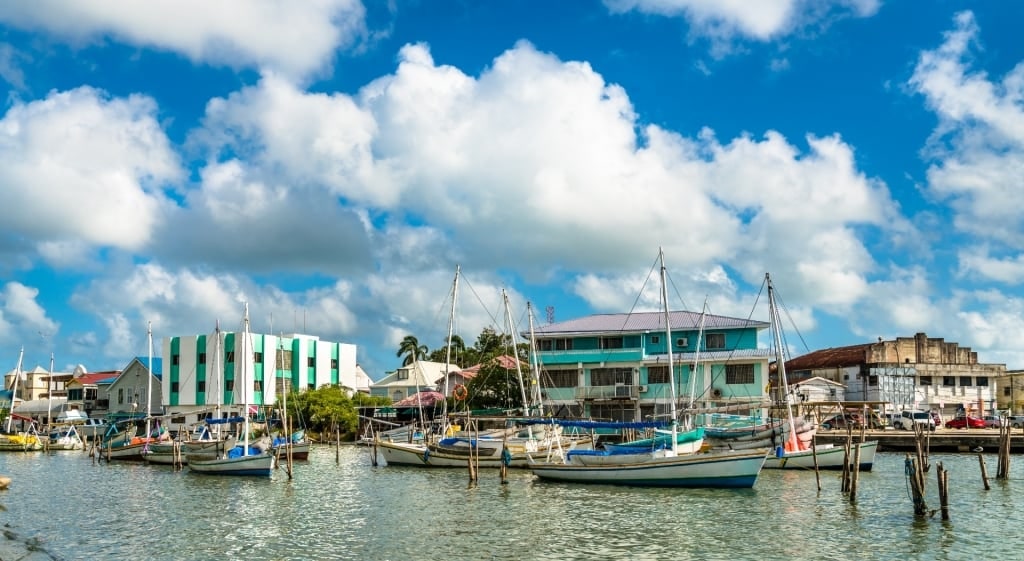
Belize City
Belize has a tropical climate with a wet season from May through November. Its dry season runs from December to April and this is the peak season for visitors.
However, anytime from November to May is a good time to visit Belize City. You may experience some short, heavy showers or quick thunderstorms, which is typical of the tropics.
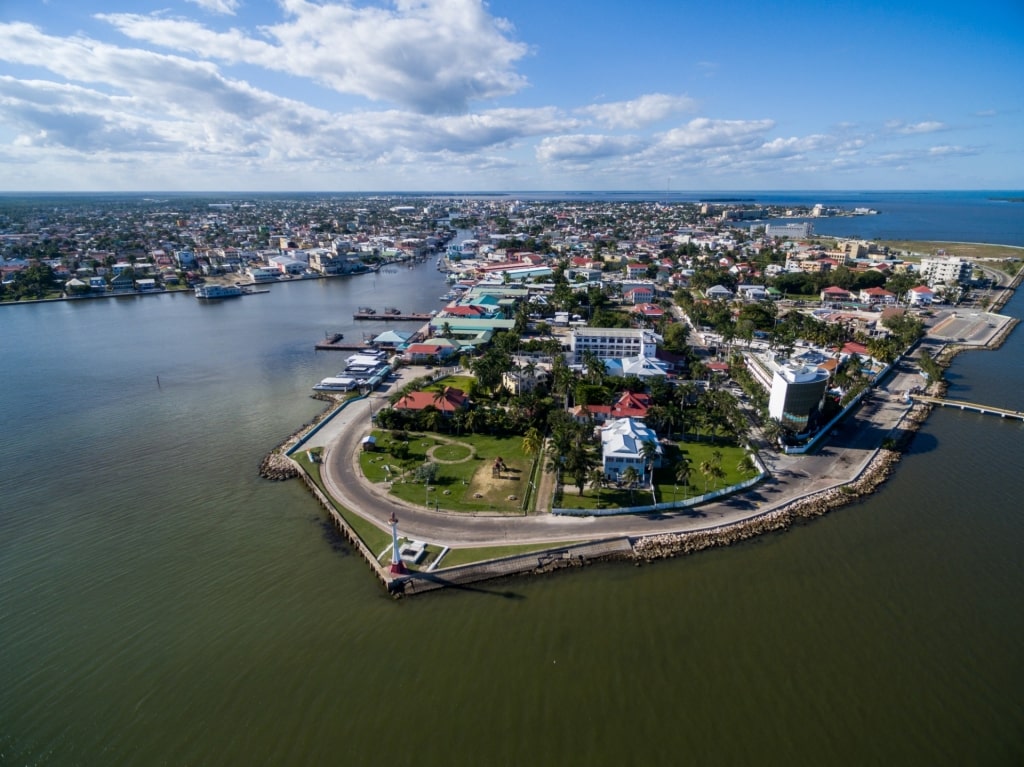
Belize City
Are you tempted to visit this amazing destination? Browse Celebrity’s Belize cruises to make dreams come true for you and your loved ones.
